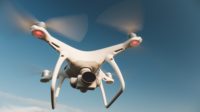Measuring the Zika Virus's International Security Implications

Public health officials and policy makers have recently learned lessons regarding high-profile health events of international concern. SARS revealed that disease may be more easily transportable with global travel. Avian Influenza H5N1 taught health authorities that potentially devastating diseases may be controlled with careful monitoring, and biosecurity measures. The H1N1 pandemic emphasized the need for rapid vaccine development as well as intensified private and public efforts to provide maximum vaccine coverage. Ebola Virus Disease (EVD), however, established that governments can and must do whatever is necessary to protect their citizens under International Health Regulations (IHR). Zika virus is now presenting new challenges for health and security professionals.
The SARS outbreak of 2003 showed the world how transportable and transmittable infectious disease had become with more efficient and expansive global trade and travel. Travel “bans,” restrictions and heavy screenings were implemented, necessitating increased airport and port security efforts. After-action reports exposed flaws and weaknesses in monitoring for public health security, and many countries hastily worked to fill in the gaps. The next large-scale health event, Avian Influenza H5N1, tested health security in a different manner. The disease was considered a low risk for human-to-human contagion, and measures to rapidly identify the pathogen in birds and humans continue to prevent large-scale outbreaks impacting general security. Migratory birds that could not be controlled could still be monitored, and agricultural biosecurity measures, as well as those in Asian “wet markets” limited outbreaks to small geographic pockets.
The pandemic influenza outbreak of 2009 (H1N1) created a sense of heightened global anxiety due to rapid spread and initial vaccine unavailability. However, private corporations joined biosecurity efforts and revised dated pandemic plans to adapt to the quickly spreading H1N1 influenza. Because the initial supply chain for the vaccine was limited, carriers were often provided physical security escorts and, companies had priority lists for vaccine administration based on key personnel. High-security facilities met with their crisis teams to develop best practices going forward. Many of these measures aided governmental entities and businesses, both by thwarting a large-scale health threat from interfering with mission-essential work, and by solidifying continuity planning.
The Ebola Virus Disease (EVD) crisis that began in 2013 and continues to the present has tested security differently. International Health Regulations (IHR) gives sovereign nations the right (and obligation) to protect their citizens. Accordingly, this mandate quickly spurred commercial flight cancellations to the primary affected areas, and resulted in severe difficulties for medical evacuation providers who need to accomplish their tasks, the degradation of an already impoverished healthcare system that led to riots, deaths of healthcare workers, and other security issues in the affected countries. The EVD event bore out what clinicians and health experts have always tended to agree: Misinformation and the resulting anxiety of publicized health crises are far more dangerous than the pathogens themselves.
Unique Challenges Posed by Zika Virus
The best practices from all of the recent events above still fall short where Zika “crisis” risk management is concerned today. The World Health Organization (WHO) declared Zika virus a “Public Health Emergency of International Concern” (PHEIC) following other independent declarations of emergencies based on health in highly impacted areas. In fact, the WHO declared potential complications, such as microcephaly or neurological problems linked to Zika, the PHEIC, and not the disease itself. Researchers need to learn more about Zika’s implications for pregnant travelers, those anticipating pregnancy in the near future and the link between Zika and sexual transmission for proper decision making about travel.
Unfortunately, these answers may come too late for Brazil. The largest country in South America and epicenter of Zika virus and its suspected effects, Brazil is not only is hosting the Rio 2016 Olympic & Paralympic Games, but is also a key business and travel destination. Companies without an internal medical unit to monitor business travel and health threats often must task personnel from human resources, travel risk management, or security to shape corporate policy and provide traveler decision guidance.
In recent weeks, security concerns have surfaced amid implementation of control measures to fight mosquitoes. In El Salvador, for instance, gangs such as Mara Salvatrucha have attempted to thwart public health efforts with intimidation tactics and violence, including denying fumigators access to certain neighborhoods and villages. Interference by gang members leaves the population vulnerable and the threat of a national epidemic entirely possible. The ongoing polio vaccine delivery crisis in Afghanistan and Pakistan, where polio health workers are routinely attacked for their efforts, demonstrates how much interconnected security and public health can become. Government policies in the Americas related to Zika may become further entwined with the security situation, as the disease’s possible connection to birth and neurological effects have renewed debate regarding contraception, abortion and the rights of the disabled. As these debates gain media exposure, the potential for protests and civilian calls to alter national laws may affect physical security in some areas through protests and rallies, and other civil actions.
Other Security Issues That May Impact Business
Additionally, “screening measures” at airports, particularly in Asia and India, may be ill-defined and hamper travelers’ movement. Thermal scanners in many Southeast Asian airports screen for elevated temperatures, while questionnaires regarding recent travel to risk areas are meant to reduce the introduction or reintroduction of disease into those countries. With only one in five patients exhibiting symptoms, a substantial portion of travelers to high-risk areas may be infectious but undetectable, calling into question the efficacy of these screening measures. Recently, the U.S. Department of Homeland Security decided not to do enhanced screening for Zika virus, but rather defer to the same practices regarding U.S. entry and illness that have been standard security procedure for years. Entrants into the U.S. displaying symptoms of illness will be escorted to a secondary Customs and Border area to review potential for any infectious disease, not solely Zika virus.
What the current PHEIC surrounding this mosquito-borne disease has in store for the months ahead remains to be seen. The emergency declaration has released funding for research into the disease and complications seemingly associated with Zika; it also provides monies for vaccine production efforts, rapid diagnostic testing means and other mosquito control efforts. Mosquitoes know no borders, and wherever there is a “competent vector” – a species capable of carrying the disease, local transmission is entirely possible and probable when imported cases provide a transmission chain. Various agencies and businesses, including the U.S. Department of Defense, are offering travel deferral or relocation of high-risk persons, potentially impacting operations in high-risk areas. Limiting Zika transmission and its impact on businesses, as well as the need for stepped-up security measures for both the public and private sectors, will necessitate education regarding relative risk, transparency surrounding preventive and mitigation measures and proactive policy to reduce anxiety.
Conclusion
The public and private sector response to date for Zika virus has been more proactive and better at mitigating concerns than for previous recent health crisis events. Duty of care responsibilities and proactive measures are being taken and questions are being asked to clarify risk and protect employees. Taking action sooner, rather than later, and requesting external assistance for improved understanding and to cover gaps seems to be having a positive impact across the board. The travel industry has seen very limited economic impact to date, despite widespread travel advisories; travelers seem better prepared to understand their risk appetite. Education and communication on a broad basis regarding Zika virus has, thus far, presented fewer security challenges than SARS, Avian Influenza H5N1, the pandemic influenza H1N1 and EVD.
Looking for a reprint of this article?
From high-res PDFs to custom plaques, order your copy today!






